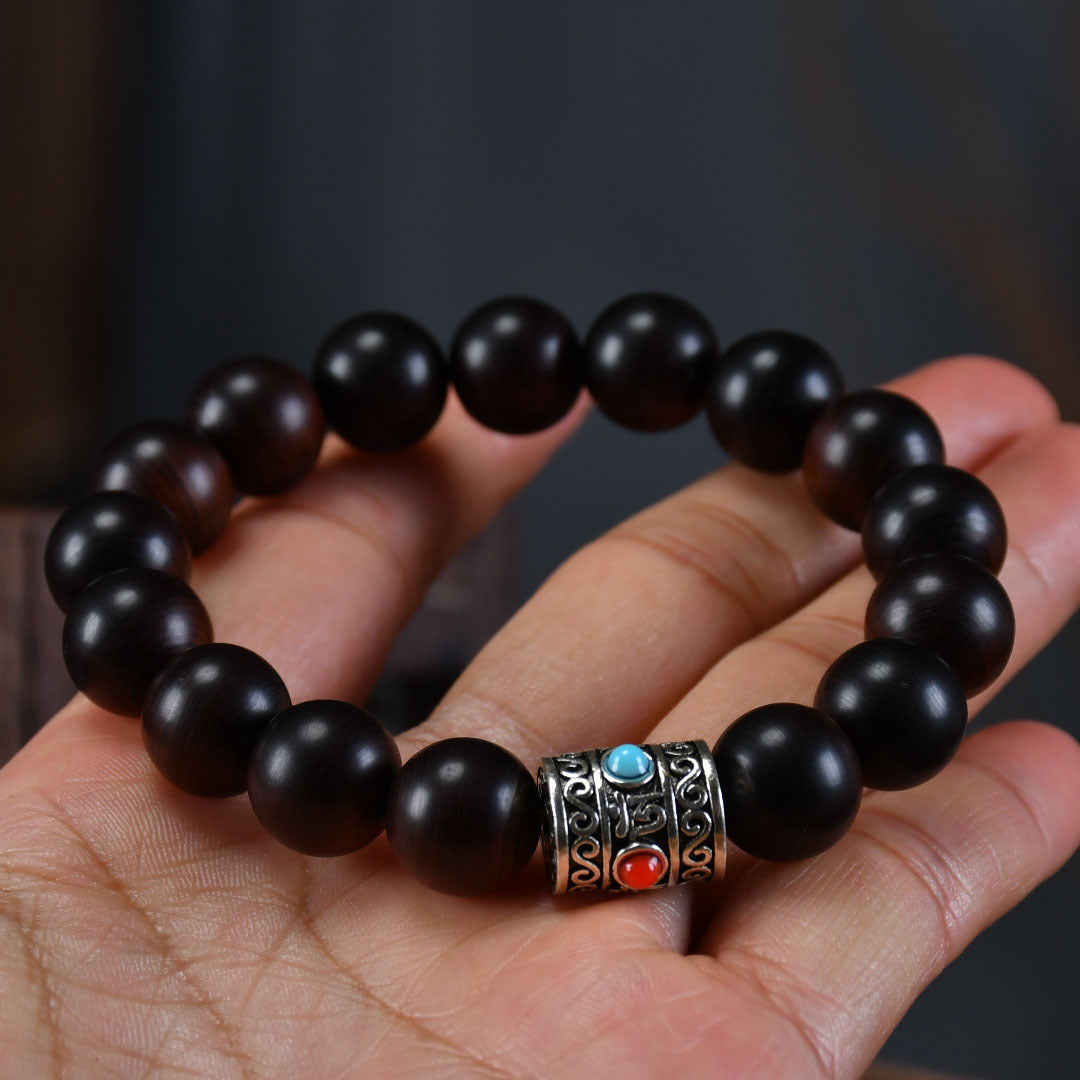Thuja sutchuenensis (cliff cypress) bracelets have become a popular choice for collectibles and daily wear due to their unique aroma, natural grain patterns, and cultural symbolism. However, the market is flooded with counterfeits and subpar products. This guide synthesizes material science, craftsmanship standards, and market insights to help enthusiasts systematically evaluate quality.
I. Material Identification: The Essential Difference Between Aged and Raw Wood
The core value of Thuja bracelets lies in aged wood—timber naturally weathered for decades after the tree’s death. Key identifiers include:
- Surface Characteristics: Aged wood exhibits dark brown or golden-yellow bark with smooth weathering lines, while raw wood appears pale with rough, crack-prone surfaces.
- Density Test: Aged wood typically sinks or partially sinks in water (density >1), though beware of oil-soaked fakes mimicking this trait.
-
Sapwood Check: Aged wood has no residual white sapwood; raw wood often retains pale edges
Red Flags: Avoid imposters labeled as "Vietnamese Thuja" or "slope cypress," which lack authentic grain density (<0.5mm annual rings)
II. Grain Aesthetics: Natural Patterns vs. Artificial Manipulation
Premium textures reflect millennia of survival in harsh environments:
- Bird’s Eye (Burrs): Organic clusters resembling avian eyes, with soft transitions. Counterfeits show rigid, machine-like arrangements.
- Antennae Lines (Black Veins): Branching black streaks formed by natural healing. Artificial versions use chemical dyes with monotone hues.
- Water Ripple & Flame Patterns: Fluid, continuous waves. Beware of abrupt breaks indicating spliced materials.
Verification Tools:
- Use a 20x magnifier to confirm tight annual rings (<0.5mm spacing)
- UV light reveals fluorescent spots in dyed or glued areas
III. Oil Content & Patina: Tactile and Scientific Validation
Oil content determines long-term collectibility:
-
Tactile Test: Authentic aged wood feels jade-like, whereas oil-dipped fakes leave sticky residues
-
Patina Formation: Natural oils gradually form a glass-like glaze; chemically treated pieces fail to develop patina or leak grease
-
Alcohol Wipe: Dyes dissolve with 75% alcohol, while genuine wood remains unaffected
Advanced Method: Seal the bracelet in a bag for 1 hour. Authentic Thuja retains a sweet, earthy aroma; fakes emit sharp or fading scents
IV. Aroma Authentication: Regional Signatures and Fraud Detection
Terroir defines scent profiles:
-
Taihang Mountain Varieties: Honeyed pine notes with lingering sweetness
-
Sichuan Varieties: Herbal bitterness layered with camphor undertones
-
Fake Alerts: Chemical fragrances or burnt odors from torched imitations
Note: Raw wood may smell grassy—cross-validate with oil and texture
V. Craftsmanship Details: Precision from Rough Cut to Polish
Superior workmanship ensures durability and aesthetics:
-
Polishing: Smooth surfaces without over-glossing to preserve wood texture
-
Perforation: Symmetrical, clean drill holes without machine marks
-
Sizing: 12-20mm beads for men, 8-12mm for women; adjust length to wrist circumference (17-22cm)
Scam Alerts: "Full burr" or "jet-black oil" claims have >90% fraud rates
VI. Purchasing Strategy: Trusted Channels and Risk Mitigation
- Reputable Sources: Prioritize sellers offering CMA-certified reports. Reject "millennium-old" marketing gimmicks.
-
Price Benchmark: Authentic aged wood ranges from ¥300–¥2,000; sub-¥200 products are likely raw wood or fakes
-
Documentation: Insist on invoices specifying "Taihang Aged Thuja" for legal recourse
VII. Maintenance: Preserving Value Through Care
-
Environment: Avoid extreme temperatures/humidity; store sealed during drastic weather
-
Cleaning: Apply olive oil monthly; never use water or chemicals
-
Handling: Limit daily wear to 2 hours. Use cotton gloves initially; switch to bare hands after patina forms
Conclusion
Selecting Thuja sutchuenensis bracelets intertwines scientific rigor and artistic appreciation. As blockchain traceability and industry standards evolve, collectors can navigate this market with informed confidence. Start with simple designs to hone discernment skills, gradually unlocking the mystique of this "botanical gold."










